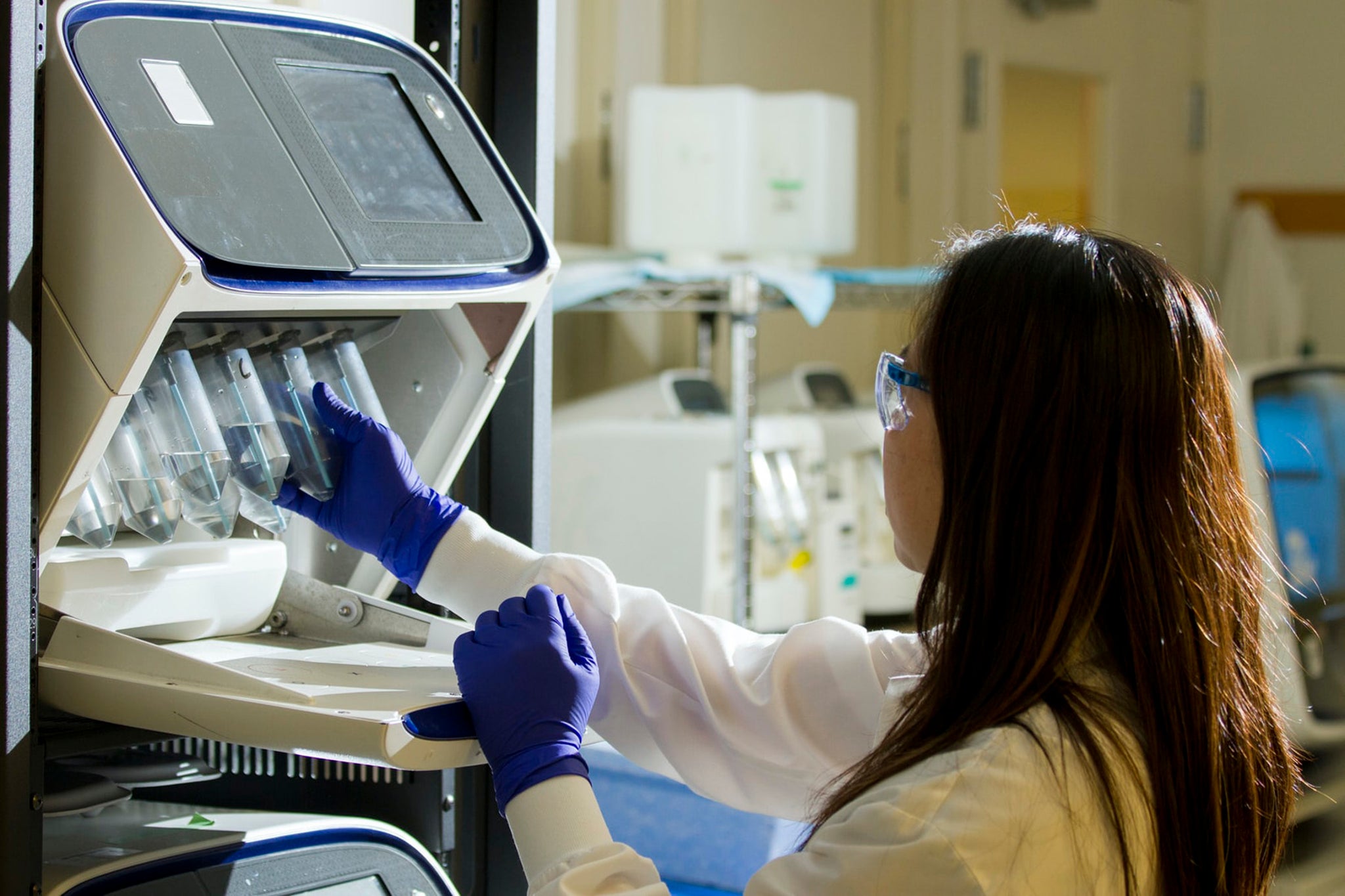With advancing technology, DNA tests for pets are becoming more accessible. You may be wondering: What is a DNA test? How can my dog benefit from one? There are some definitions to understand when discussing gene sequencing.
Nucleotides
There are four chemical bases, or nucleotides, that make up deoxyribonucleic acid (DNA). The base Adenine is paired with Thymine, and Cytosine with Guanine. The nucleotides are linked together by a hydrogen bond to form the rung of the DNA double helix.
Genes
A gene is a particular segment of a DNA strand. Cells read the sequence of a gene in groups of three. These triplets are called codons. A codon signals which amino acid will be synthesized. The 20 amino acids are the building blocks of all proteins.
Chromosomes
A chromosome is a single strand of DNA. They carry thousands of genes that are passed down through generations during reproduction.
Genomes
A genome is the comprehensive collection of an organism’s chromosomes. Dogs have 39 pairs of chromosomes, cats have 19, and humans have 23. A genome is the entirety of an individual’s genetic makeup.
Gene Sequencing
The order of the base pairs in a DNA segment can change the instructions for a particular gene. Single nucleotide polymorphisms, or SNPs, are like spelling mistakes. Spelling mistakes can change the whole meaning of the word, or not change much at all. SNPs are genetic variations. Certain differences in gene sequences can have little to no effect, where others could completely change a pet’s genetic makeup. Pets can inherit these genetic variations, leading to genetic diseases being passed down.
Because genetic variations can be passed down through generations, gene sequencing is the scientific process of reading DNA sequences to look for SNPs. In the process of gene sequencing, nucleotides are tagged with fluorescent dyes for identification and a machine reads the order of the DNA bases. The machine scans for SNPs in particular genes that scientists have determined to be linked to different traits or health concerns.
Acquiring more DNA samples from a population creates a larger data pool for scientists to analyze. The more data they have, the more accurately they can compare gene sequences in a population and variations among them. This increase in accuracy can build evidence that certain genetic variations can then be linked to certain diseases or health issues. Advances in gene sequencing can lead to earlier and more accurate diagnoses of diseases. Gene sequences can also help determine the best treatment for these diseases.
Pet DNA tests are available for owners to better understand their pet’s genetic makeup and be more aware of potential health risks their pet may have.




